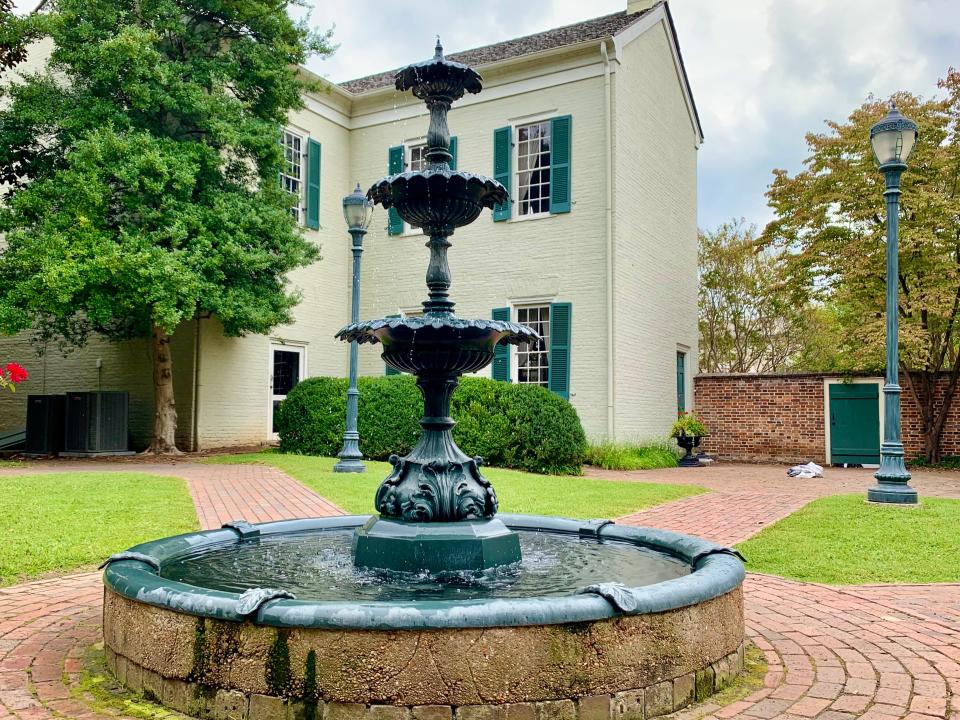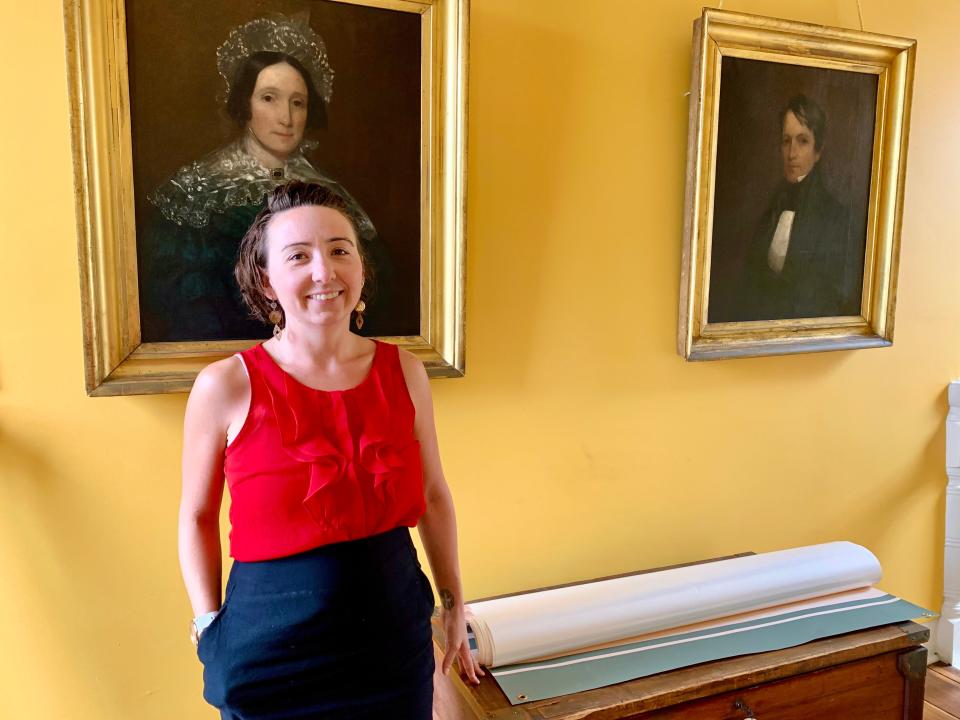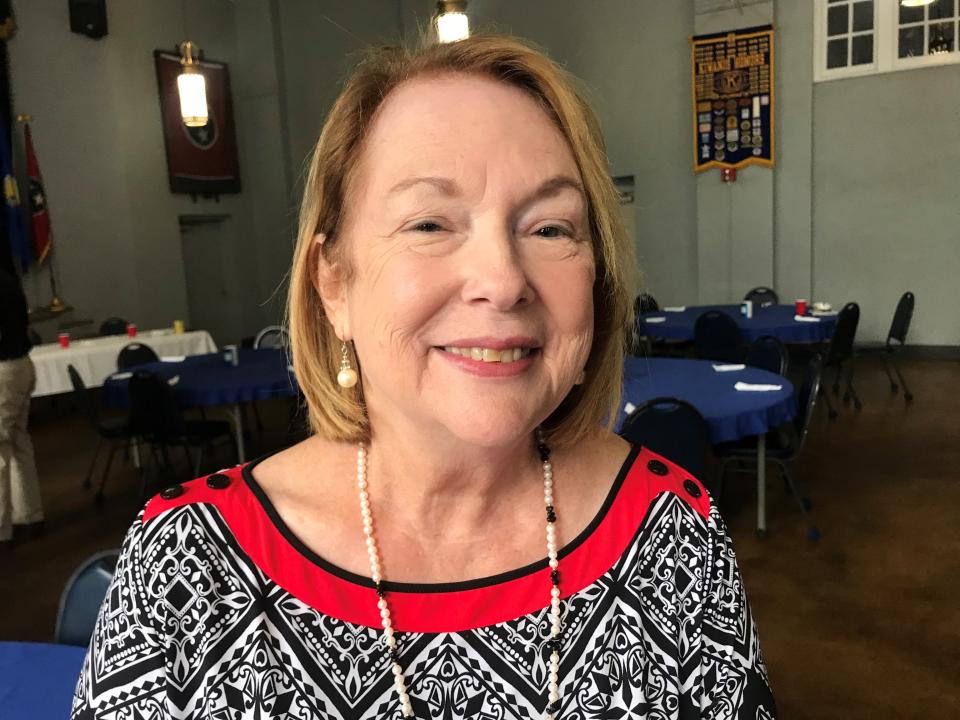Sheila Hickman: Mexican War Exhibit opens at Polk Presidential Hall
- Oops!Something went wrong.Please try again later.
On Oct. 1, the Polk Presidential Hall on South High Street opened a new exhibit entitled “Shaping a Nation: Tennessee Volunteers and the Mexican-American War.” The exhibit is funded by an $11,200 grant from the Tennessee War Commission, which is part of the Tennessee Historical Commission.
The guest curator of the exhibit is Dr. Tim Johnson of Lipscomb University. Dr. Johnson’s book For Duty and Honor: Tennessee’s Mexican War Experience gave him special insight into this historical event.

Johnson explained, “With the territorial expansion that the war brought, Polk brought to fruition Thomas Jefferson’s vision of ‘an empire for liberty,’ but it also intensified the sectional debate over slavery and hastened the country’s path toward Civil War. Mexico’s battlefields also served as a training ground for over 200 future Civil War generals. The Mexican-American War solidified Tennessee’s moniker as the Volunteer State, and this exhibit highlights the important role that Tennesseans play in the conflict.”
Rachel Helvering, Polk home executive director, said, “We are excited to bring original exhibitions back to our visitors and the community.”
Kate Holt, Polk home curator, explained a few key artifacts at the exhibit.
“This exhibit will utilize the Polk home’s collection as well as loaned artifacts," Holt said. "Visitors might be especially interested to see our newest acquisition, a military commission of Tennessean Nelson McClanahan, first lieutenant of the 14th Regiment. The document is signed by President Polk and William Marcy, Polk’s Secretary of War.”

The war with Mexico became official on May 12, 1846, when the U.S. Senate voted 40 to 2 to go to war after Polk accused Mexican troops of invading the U.S. by going north of the Rio Grande. Mexico claimed the land as its own, and Mexican officials accused the U.S. of having invaded.
The conflict actually began when Texas was an independent republic from Mexico and the U.S. The U.S. attempted to buy the territory held by Mexico. Polk subscribed to the Manifest Destiny notion that the U.S. was destined by God to expand its dominion and spread democracy and capitalism across the continent. John O’Sullivan, a journalist, had popularized the phrase, which implied that the nation had the right to remove or destroy whatever was necessary to fulfill that destiny.
The war with Mexico showed the prowess of the mostly volunteer army on foreign soil. On the battlefield, Robert E. Lee, Ulysses S. Grant, Stonewall Jackson, James Longstreet, and George Pickett served valiantly. The Mexican War provided experience for these leaders for the Civil War, which loomed in the future.
Portions of the war were fought in California and in Mexico. Col. Stephen W. Kearney led the troops in California. Zachary Taylor led the war efforts in Mexico. In Mexico, General Antonio Lopez de Santa Anna returned from Cuba to attempt to work for peace, instead he became the leader of the Mexican forces. The Mexican forces outnumbered the Americans, but the inferior weapons of the Mexicans gave them a real disadvantage.
Gen. Winfield Scott took an army by sea to invade Veracruz in March. By September 1847, Scott’s forces captured Mexico City, and the military conflicts were over.
The U.S. casualties lost 1,500 in battle or from injuries, but at least 10,000 troops died of disease. Poor sanitation and diseases such as yellow fever, measles, mumps and small pox contributed to so many casualties. The U. S. forces won every battle, but the loss of life was a high price to pay.
President Polk sent Nicholas Trist, chief clerk of the State Department, with Scott’s forces to negotiate a peace treaty. Mexico was financially broke. The U. S. had established a blockade so that Mexico could not conduct business easily.
Polk was not pleased with Trist and ordered him home. Trist ignored the order and proceeded with the peace treaty. On February 2, 1848, the Treaty of Guadalupe Hidalgo was agreed upon. The U.S. gained more than 500,000 square miles, which expanded the territory by one-third. Mexico had ceded 55% of its land. From that land came California, New Mexico, Utah and Nevada. Most of Arizona and Colorado and parts of Oklahoma, Kansas, and Wyoming came from that parcel. All claims to Texas were also forfeited by Mexico.
The treaty had to be written in both English and Spanish. Mexico was paid $15 million dollars, the equivalent today of $420 million. Ironically Santa Anna who won the battle of the Alamo in 1836 became the president of Mexico.
Although the U.S. promised to enforce the Rio Grande as the border, the boundary was not officially established until 1880 by the International Boundary Commission.
The first item in the display is a beautiful mural by David Wright, which depicts events in the Mexican-American War. Items loaned from the Tennessee State Museum include a bugle, saber and a Mexican-American War medal. The exhibit will be open until Aug. 1, 2023. The tour is self-guided and very well presented, but a docent will be there to answer questions.
The Polk Home and the Presidential Hall are open seven days a week for guided tours. The Polk Home is the only remaining home where Polk lived except the White House. Visit www.jameskpolk.com for more information.
This information for this article came from the Polk Home’s press release and from Encyclopedia Britannica (https://www.britannica.com).

This article originally appeared on The Daily Herald: Sheila Hickman: Mexican War Exhibit opens at Polk Presidential Hall

